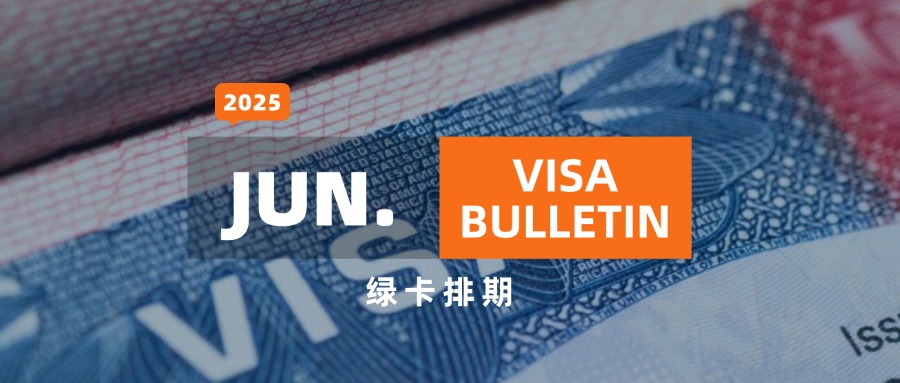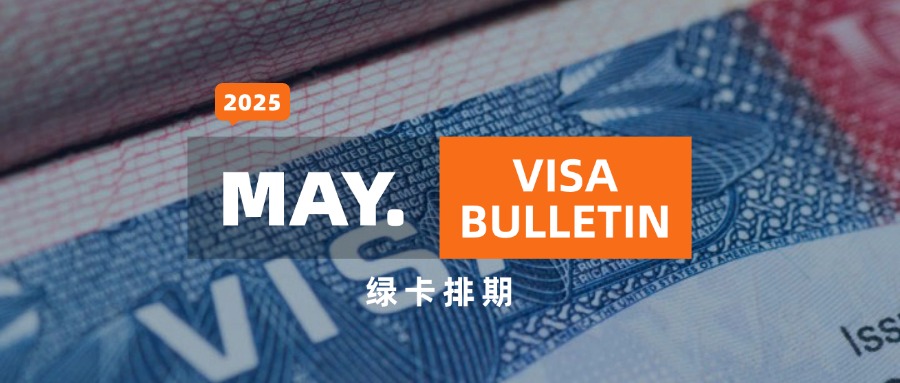
EB-5 Immigrant Investor Program
In 1990, Congress established the USCIS Immigrant Investor Program, also known as the Employment-Based Fifth Preference (EB-5) Program (the “EB-5 Program”). The EB-5 Program was created under Section 203(b)(5) of the Immigration and Nationality Act (INA) in 1990, by Public Law 101-649, Section 121(a), to stimulate the U.S. economy through job creation and capital investment by foreign investors. Three years later, the Departments of Commerce, Justice, and State, the Judiciary, and Related Agencies Appropriations Act, 1993 (The Appropriations Act), introduced the concept of the regional center pilot program (the “Regional Center Program”) for pooling investor capital in a specified industry and geographic area to promote economic growth.
On March 15, 2022, President Biden signed the EB-5 Reform and Integrity Act (the “RIA”) within the Consolidated Appropriations Act, 2022 (Public Law 117-103). This legislation introduced new requirements for the EB-5 immigrant visa category and the Regional Center Program, with immigrant visas being authorized under this program until September 30, 2027.
Through the EB-5 Program, foreign investors can obtain lawful, permanent residency in the United States for themselves, their spouses, and their minor unmarried children by making a required level of capital investment and creating or preserving jobs.
General Requirements
To obtain permanent residency through the EB-5 Program, the foreign national must satisfy the following requirements.
- Make a minimum investment of either $800,000 or $1,050,000 in a new businessi 1 or investment entity (the “New Commercial Enterprise” or “NCE”). The lower investment amount of $800,000 applies to investments made in geographic areas qualified as “Targeted Employment Areas” (“TEA”), which are areas considered to be higher unemployment areas or rural areas. 2
- Demonstrate the lawful source of the investment committed by the foreign national. This involves providing evidence of the lawful acquisition of the investment capital and the transfer of such funds to the New Commercial Enterprise.
- The New Commercial Enterprise must create 10 full-time jobs, which may be either direct or “indirect” positions. Direct job creation are individual employees employed directly by the New Commercial Enterprise. “Indirect” job creation are derived from an economic model based on expenditures of the EB-5 project and may only be used by investments administered under the Regional Center Program.
EB-5 Green Card Process
The foreign national will first receive a two-year conditional green card, which has the same rights and privileges of an ordinary green card. Within 90 days before the end of the two-year conditional green card validity period, the foreign national would petition for the removal of the conditions to obtain the ordinary green card, by demonstrating that the job creation requirement has been satisfied.
The following is an overview of the steps required to obtain a green card through the EB-5 Program. This is applicable to the foreign national who is the primary petitioner and immediate family members (i.e., spouse and unmarried children under 21).
Step 1 – Immigrant Petition (I-526/I-526E): Upon completing the EB-5 investment, the foreign national will file either the Form I-526 or I-526E petition with the U.S. Citizenship and Immigration Services (USCIS).3 This petition demonstrates to USCIS, (a) the foreign national’s lawful source of funds and (b) the likelihood of the New Commercial Enterprise to meet job creation requirements within two years of receiving the conditional green card.
Step 2 – Conditional Green Card: The approval of Form I-526 or Form I-526E enables the foreign national to acquire a conditional green card. The process for obtaining the green card varies depending on whether the foreign national resides within the United States.
- Residing within the United States (Adjustment of Status): A foreign national must submit the Form I-485 to adjust their status in the United States. While a pending Form I-485 allows them to legally remain in the U.S., it does not confer travel or employment rights. Therefore, it is common to file Form I-485 concurrently with Form I-765 for employment authorization and Form I-131 for advance parole, which enable the applicant to work and travel during the processing period. Upon approval of the Form I-485, the applicant receives a conditional green card (Form I-551). Importantly, the applicant can file for adjustment of status without waiting for the approval of the Form I-526/I-526E.
- Residing Outside of the United States (Consular Processing): A foreign national must apply for an Immigrant Visa at the U.S. Embassy or Consulate in their home country through Consular Processing. This involves submitting Form DS-260 and attending a consular interview. After completing these steps, the individual receives an immigrant visa stamp as temporary proof of their permanent resident status. Using this visa, the foreign national enters the U.S. and, upon entry, will be mailed the Form I-551 (conditional green card). The conditional green card can be obtained through consular processing following the approval of Form I-526/I-526E by USCIS.
Note 1: Immigrant Visa Priority Date
The EB-5 immigrant classification grants about 10,000 green cards annually, subject to a 7 percent cap per country. Once this cap is reached, investors from that country may face a wait, known as “retrogression,” until new visas become available. The duration of this wait hinges on the investor’s “Priority Date,” which is set when Form I-526/I-526E is submitted to USCIS. An investor can only proceed with Adjustment of Status or Consular Processing to receive their conditional green card when their Priority Date is listed as “Current” in the latest visa bulletin. The likelihood of experiencing retrogression varies significantly based on the investor’s country of origin.
Note 2: Concurrent Filing of Adjustment of Status
A foreign national can file the adjustment of status (Form I-485) concurrently with Form I-526/I-526E, without needing to wait for approval of the latter. This concurrent filing, along with applications for employment authorization and advance parole, permits the foreign national to live and work in the United States under conditions similar to those of a green card holder while Form I-485 is pending with USCIS.
Step 3 – Removal of Conditions (Form I-829): The initial conditional green card has a validity of two years. During the 90 days prior to the end of the two-year validity period, the foreign national must file the Form I-829 to remove the “conditions.” The purpose of the Form I-829 petition is to demonstrate the job creation requirement has been satisfied (i.e., the foreign national’s EB-5 investment has resulted in the creation of 10 full-time jobs). Once the Form I-829 is submitted, the foreign national will receive an automatic extension of the conditional green card validity. The foreign national will obtain ordinary permanent residency upon approval of the Form I-829.
Types of EB-5 Investments
There are two types of EB-5 investments: (1) Direct Investment; and (2) Regional Center Investment. The vast majority of EB-5 investors invest through a Regional Center.
Direct Investment
In a direct EB-5 investment, a foreign national must invest at least $800,000, or $1,050,000 if the business is outside a targeted employment area, in a U.S. business. The investor needs to actively manage the business and ensure it creates at least 10 full-time jobs for qualified U.S. workers (U.S. citizens or green card holders) within the two-year period of their conditional green card.
Note 3: Practical Considerations
Following the enactment of the RIA, EB-5 investors are no longer permitted to pool investments into non-regional center projects or businesses. This means that direct EB-5 projects can only accommodate one investor each. For many businesses, the minimum investment amounts of $800,000 or $1,050,000 may not cover multi-year operations or create the required 10 full-time positions. Consequently, foreign nationals looking to invest in and operate their own projects may need to invest beyond the minimum amount. Additionally, all capital invested must meet the source of funds requirements.
Regional Center Program
Regional Centers are entities designated by USCIS to administer EB-5 investments in certain geographic regions to facilitate economic growth. Regional center investments resemble traditional private equity investment structures, where EB-5 investors become limited partners of a special purpose investment vehicle. The pooled EB-5 investments are deployed to a project entity known as the “Job Creating Enterprise” or “JCE” as either a loan or preferred equity. The JCE will use the EB-5 funds to develop or operate its intended business.
In contrast to direct EB-5 investments, a regional center can meet the job creation requirement through the creation of “indirect” jobs. These jobs are estimated by an EB-5 economist using an input-output model, which analyzes the project’s expenditures and their impact on regional job creation.
Regional center investments are typically managed as private placement securities offerings, exempt under Regulation D of the Securities Act of 1933. Prospective EB-5 investors usually receive a subscription package containing:
- Subscription Agreement: Outlines the procedure for subscribing to the offering as an EB-5 investor.
- Operating Agreement/Limited Partnership Agreement: Specifies the rights and responsibilities of the EB-5 investor as a member or limited partner.
- Private Placement Memorandum (PPM): Provides essential facts and risks associated with the offering.
- EB-5 Business Plan: Describes the project’s intended operations and includes documents supporting the feasibility of its goals.
- Economic Study: Conducted by an EB-5 economist, this details the methods used to predict job creation.
Foreign nationals investing through a regional center would typically transfer EB-5 funds to an escrow account. Once the transfer is completed, the escrow agent will issue a notice acknowledging the deposit. The foreign national can then submit the Form I-526E to USCIS. Thereafter, USCIS will issue a receipt notice to evidence the filing of the Form I-526E. The receipt notice is provided to the escrow agent, who then releases the funds to the New Commercial Enterprise (the investment entity).
Note 4: Investor Protections
To safeguard EB-5 investors, the RIA mandates that transactions involving EB-5 funds be audited or managed by a fund administrator independent of the New Commercial Enterprise (NCE), regional center, and Job-Creating Entity (JCE). This administrator must be a licensed Certified Public Accountant, attorney, or broker-dealer. Additionally, sponsors are required to certify compliance with securities laws, register key personnel from the regional center, NCE, and JCE, as well as direct and indirect promoters. Investors must also receive a disclosure detailing all fees paid related to the offering, including any transaction-based compensation.
Note 5: Return on EB-5 Investment
EB-5 investors typically will not receive a significant return on their EB-5 investment. The benefit they derive from the investment is the prospect of permanent residency. As such, EB-5 investment is an attractive option for project sponsors because of its lower cost of capital in comparison to alternative financing options. In effect, the U.S. government is incentivizing investments from foreign investors by offering them a path to permanent residency.
Regional Center Investments
Nearly all regional center projects are within Targeted Employment Areas, which allows investors to invest the lower minimum amount of $800,000.
A Targeted Employment Area (TEA) is designated as either a rural area or an area with higher unemployment to promote investment in regions needing economic growth.
- Rural areas (“Rural TEA”) are defined as locations outside of cities or towns with populations over 20,000 and not part of a metropolitan statistical area. The RIA requires USCIS to prioritize the adjudication of petitions based on investments in Rural TEA projects.
- High unemployment areas which are typically located in urban areas (“Urban TEA”), have unemployment rates at least 150% above the national average.
Through the enactment of the RIA, a portion of the EB-5 visa allocation is reserved annually—20% for rural and 10% for higher unemployment areas—providing a quicker path to residency for applicants from countries with visa backlogs.
Risk Considerations
Risks for EB-5 investors can be separated into two categories: (1) immigration risk; and (2) financial risk.
- Immigration risk refers to the investor’s ability to obtain permanent residency through the EB-5 investment. This is primarily dependent on the ability of the EB-5 project to meet the job creation requirement. For example, in a regional center project involving real estate development, the job creation requirement can be satisfied by completing the construction of the real estate project using the EB-5 investments.
- Financial risk involves the ability of a project to repay the principal to investors on time, influenced by the exit strategy, investment terms, and capabilities of the principals/operators. Under EB-5 regulations, investments must be “at-risk” for a minimum of two years, prohibiting guarantees of principal redemption. The timing of the investment is determined by the terms agreed between the New Commercial Enterprise (NCE) and the Job Creating Entity (JCE), and the JCE’s ability to meet these obligations.
The ideal outcome for EB-5 investors is to achieve permanent residency and receiving a timely return of their investment principal.
EB-5 Business Models
Most EB-5 projects through regional centers focus on real estate development, as the construction expenses align well with the methodology used to calculate job creation. Following the implementation of the RIA, there has been an increase in projects within Rural TEAs, featuring a broader range of business models and unique risks. Despite this, real estate development continues to be the dominant model for projects in both Rural and Urban TEAs.
- Investments may also be in an existing, “troubled,” business, where the investments preserves the existing jobs of the business. ↩︎
- The lower investment amount is also applicable to qualified infrastructural projects. ↩︎
- The Form I-526E is used by foreign nationals investing through the Regional Center Program, whereas the Form I-526 is used for non-regional center investments. ↩︎


